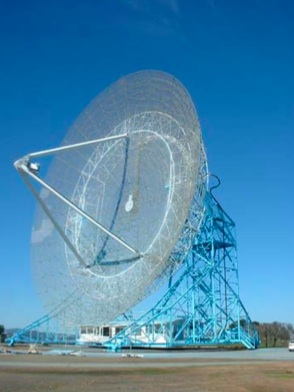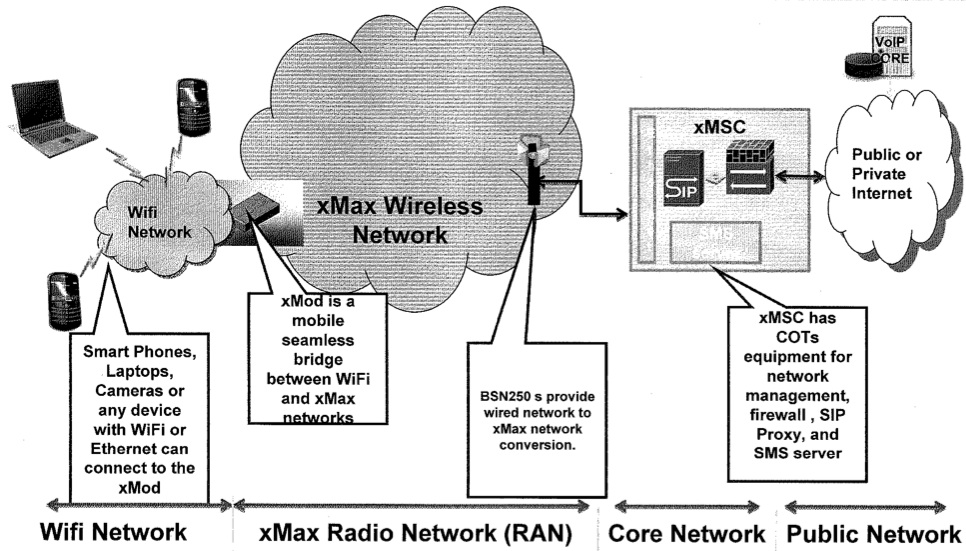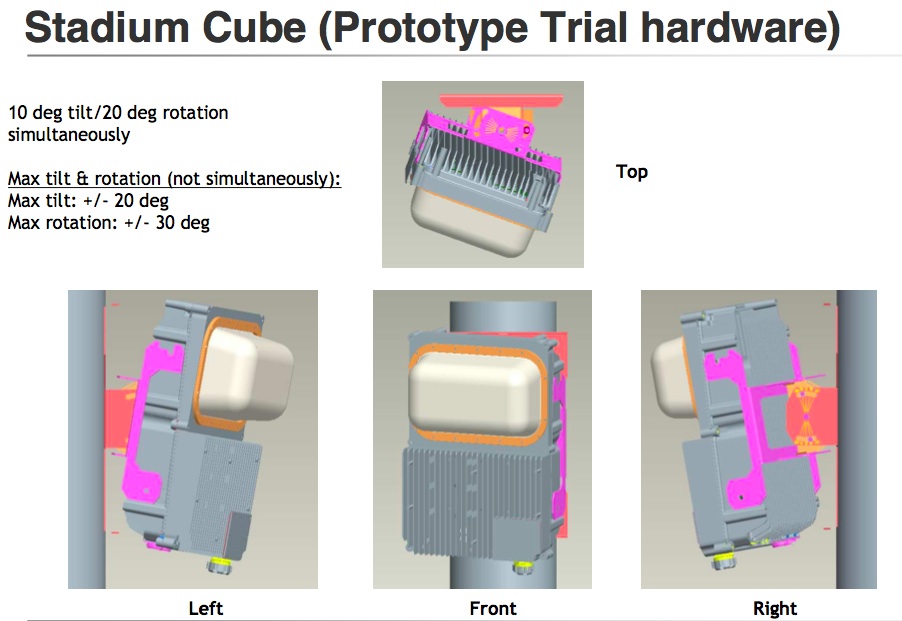This summarizes a selection from 289 applications for the Experimental Radio Service received by the FCC during April, May, and June 2012. These are related to AM, high-frequency propagation, ultra-wideband, frequency-hopped VHF, managed access, small satellites, radar, MIMO, TV white space, low-power FM, stadium wireless service, GSM, and DTV. The descriptions are sorted by the lowest frequency found in the application.
- Brian Justin filed an application with exhibits for experimental license to operate AM and CW transmitters “in commemoration of significant events in the days of early wireless transmission.” Operation will be from Forest, Virginia on 483-510 kHz.
- Rincon Reseearch Corporation filed an application for special temporary authority to make a series of HF ionospheric propagation measurements “in order to characterize time-varying effects that limit the ability to geolocate uncooperative HF transmitters. The collected RF data is required to develop a parametric channel model that can be used to correct for variability in time of arrival and frequency of arrival for signals associated with near-vertical-incident-skywave (NVIS) communication networks. Current ionospheric sounding systems (e.g., Digisondes) do not provide this unique type of information.” The test transmitter will be at Tucson, Arizona and operate over 4-12 MHz.
- Raytheon Integrated Defense Systems filed an application with exhibit for special temporary authority to test VHF frequency-hopping transceivers with a variety of antennas. Operation will be at Sudbury and Andover Massachusetts on 30-74.6 and 76-87.975 MHz.
- David Weinshenker filed an application with exhibits for special temporary authority for “[e]xperimentation with signal strength requirements and useful reception range of a low-power wireless audio distribution system.” Basically, it appears he wanted to run a low-power FM station for an event but was initially turned down by the FCC. Being told such operation might be permitted as an experiment, he developed one. Operation is to be in Stockton, California on 95.3 MHz. (I thought broadcast experimental applications were handled by the FCC’s Media Bureau instead of OET.)
- Curtis-Wright Controls (CW) filed an application for special temporary authority to “conduct demonstrations of next generation versions of its ultra-wideband ground penetrating radar (GPR) device known as 3d-Radar for prospective non-federal customers in the coming months as it awaits an FCC grant of its Petition for Reconsideration of a Waiver Order (ET Doc. 10-167) (Petition). These next generation devices operate in steps of 10 MHz or 20 MHz. A grant of its pending Petition would permit CW to operate these devices (subject to obtaining appropriate equipment authorizations). By way of background, in January 2012, the FCC granted CW’s Part 15 waiver request which gave CW authorization to operate a prior version of the 3d-Radar device (which operates in 2 MHz steps) for non-federal use (subject to obtaining appropriate equipment authorization). (ET Doc. No. 10-167.) In its Petition, CW asked the FCC to modify the Waiver Order so that the conditions set forth in the Waiver Order do not prohibit natural advancements in the 3d-Radar technology (like those which are the subject of this STA request) which do not adversely affect other licensed spectrum users.” Operation will at various locations nationwide on 140-3000 MHz.
- Raytheon BBN Technologies filed an application with exhibit for experimental license to “demonstrate and characterize the communications performance of coherent distributed MIMO techniques being developed under DARPA BAA 11-61, the Computational Leverage Against Surveillance Systems: Advanced Communications Techniques (CLASS ACT) program.” Testing will take place at several locations in Virginia and Pennsylvania on 176-215, 460-608, 880-932.675, and 941.725-970 MHz.
- The Texas A&M University AggieSat Lab filed an application with exhibits for experimental license to transmit data from an orbiting microsatellite to a university ground station. The satellite is designed to fly a prototype GPS receiver, developed by NASA, and collect data to determine the usefulness of using such a receiver for navigating with orbital spacecraft. Results of this project and further development have a direct impact on NASA’s planned navigational aids for the Space Station operations, the Multi-Purpose Crew Vehicle (MPCV), and other commercial spacecraft in development. Testing will be in Bryan, Texas on 400-464 and 2400-2483 MHz.
- New Mexico State University filed and application with exhibits for experimental license to to operate transmitters in support of its Unmanned Aircraft Systems (UAS) Flight Test Center, the only one authorized by the FAA. The facility is authorized to conduct UAS flights for testing, training, and demonstrations within 15,000 square miles of authorized airspace. “The equipment used for both ground and aboard the UAS is similar or in most cases identical. Each UAS is configured with control and data links.” The UAS typically are set up as one of the following: 1) C-band uplink and downlink / UHF backup, 2) UHF uplink / S-band video and data downlink, or 3) L-band uplink / S-band video and data downlink. “A primary and a secondary control link is always used. Uplinks, which contain the control commands, are always less bandwidth than downlinks, which often contain UAS telemetry and payload data.” Operation will be in New Mexico on 434.525, 434.680, 439.500, 2280, 4550, and 4900 MHz.
- The National Center for Advanced Small Spacecraft Technology filed an application with exhibits for special temporary authority to test picosatellite (10 cm cube) communications in Low Earth Orbit. The experiment will use Short Burst Data modems to facilitate communication to mission control, using the Orbcomm and Iridium satellite systems as a relay. This STA is intended to cover that space-to-space communications. Operation will be on 437.465 MHz.
- The Electric Power Research Institute (EPRI) filed an application with exhibit for experimental license. According to EPRI, its “research program will focus on the application of TV White Space spectrum for utility communications. There are a variety of potential applications ranging from smart metering to distribution automation. The EPRI supplemental testing program will serve a group of utilities and provide results on the performance and behavior of TV White Space devices and the band characteristics. Commercial, off the shelf base stations, terminals, and antennas will be used in the testing program. A variety of equipment will be tested (including interoperability for equipment claiming standards-conformance), depending on vendor availability, testing schedule, and budget. The test program will be developed with input from the member utilities to meet their needs and objectives.” Operation will be at Overland Park, Kansas and Knoxville, Tennessee on 470-786 MHz.
- The National Association of Broadcasters filed an application with exhibits for special temporary authority to “conduct a field testing program to quantify reception improvements as a result of adding a non-synchronized on-channel booster for ATSC DTV/Mobile DTV signals in a number of difficult reception scenarios. The program will evaluate the performance improvements using a single, multi-channel, on-channel booster operating at selected locations – such as shopping malls, office buildings, arenas, etc. – in and around the DC metropolitan area. The project will quantify reception improvements, catalog any adverse reception impacts and capture and store RF signals at these locations for additional analysis.” Operation will be on 506-608 and 614-689 MHz.
- The University of Missouri filed an application with exhibits for experimental license to evaluate a new RF method for remotely detecting electronic devices. “This method has been tested in an RF anechoic chamber but needs to be evaluated in an outdoor environment. Testing will involve emitting specific RF frequencies which are proprietary and export controlled and spatially scanning a line-of-site (1m to 100m) field-of-regard with directional helical antenna. The details of the RF pulse characteristics, helical antenna, spatial scanning, and ultimate application are all considered to be government sensitive information and are export controlled. All of the experiments performed will be ground penetrating. This project is being done under contract with the United States Department of Defense specifically the Army Us Space and Missile Defense Command and the Leonard Wood Institute.” Operation will be in Petersburg, Missouri on 600, 820, 840, 880, 900, and 902-928 MHz.
- ShawnTech filed an application with exhibit for experimental license to test “secure managed access of wireless devices to the existing commercial networks of licensed CMRS operators (the ‘Macro Network’) in a defined geographic area within a Law Enforcements and/or Public Safety Agencies facility to stop the unlawfully [sic] use of contraband devices by inmate/offenders housed in a correctional facility (prison, jail, detention center, etc.). The C5 system operates within the ‘call set-up’ layer of the wireless infrastructure to authenticate permitted devices for completion of their ‘calls’ (voice, test, SMS or data), by the Macro Networks, while capturing and holding unauthorized devices at ‘call set-up’/authentication and disallowing the completion of their calls to the Macro Network.” “The Spectrum Usage Rights will be utilized by Lessee as a Private Mobile Radio Service (‘PMRS’) to manage access to the Commercial Mobile Radio Service (‘CMRS’) within the scope of the Spectrum Usage Rights . . ..” Operation will be at the Lieber Correctional Institution, Ridgeville, South Carolina, on 869.2-893.8, 869.7-893.31, 1930-1989.8, and 1931.25-1988.75 MHz.
- SRI filed an application with exhibits for special temporary authority to demonstrate the ability to detect and track space debris. Operation will be at Palo Alto, California on 902-928 MHz. “For this experiment, SRI International will use the Bluestar antenna, which is known locally as the Big Dish. SRI built this antenna in the early 1960s on Stanford University land under contract to the U. S. Navy. The U. S. Government owns the antenna today via the Naval Research Laboratory (NRL), and SRI continues to operate it under contract to the Navy. Our agreement with the Navy allows SRI to use the antenna on programs funded by other entities and for in-house research.”

- xG Technology filed an application with exhibits for experimental license to conduct market trials of an unlicensed cognitive radio network developed for the 902-928 MHz band. It is called the xMax wireless network. Data is sent over the xMax network to the user device, called an xMod. That’s described as a “mobile seamless bridge” — basically, a hotspot that provides Wi-Fi access for the consumer.

- BAE Systems filed an application with exhibit for experimental license to conduct proof-of-concept testing for next-generation airborne communication intelligence (COMINT) for unmanned aerial vehicles (UAVs). Operation will be in Hudson, New Hampshire on 1626-1660 MHz, 1760-1840 MHz, 2365-2445 MHz, and 10.25 GHz.
- T-Mobile filed an application with exhibit for special temporary authority to “undertake testing of the 1755-1780 MHz and 2155-2180 MHz bands to determine its suitability for commercial mobile broadband services, in particular the effect of existing Federal government operations on the use of this spectrum for mobile Long Term Evolution (“LTE”) service. The wireless industry, the FCC, and NTIA all have a great interest in evaluating this band and determining the feasibility of reallocating it from Federal to commercial wireless use. Testing will focus on the ability of Federal and commercial uses to share the spectrum during an interval where Federal use for certain systems may continue. In addition, data will be collected on the effects on commercial operations from the existing Federal uses in this band.” The application was filed on May 4, 2012 and has not been approved as of this writing. Testing was to take place between June 1, 2012 and December 1, 2012 in the “continental United States.
- Nicholas Burrows filed an application with exhibit for experimental license “to verify functionality of an Open Source GSM network design in an outdoor test range under load of up to 1,000 test users. For one week, users will send and receive text messages and place voice-calls to various services and other users while the system is under observation. System will consist of several Base Stations to provide experimental service to test users.” Testing was to have occured last week at the Toorcamp Conference at Neah Bay, Washington on 1958-1960 MHz.
- Alcatel-Lucent filed an application with exhibits for special temporary authority for a “5 month experimental evaluation of a new small cell approach to provide wireless capacity to stadium enviornments [sic] where increasing traffic densities exceed more traditional Macrocellular base stations. This trial will use prototype small cell equipment to test deployment strategies and procedures.” The objectives are to understand the performance and key functionality of a small cell system in a stadium deployment, verify and optimize co-existence of macro and small cell platforms, quantify network and user capacity, coverage, and mobility performance, and refine deployment recommendations and feature requirements.” Operation will be on 2145-2155 MHz at the Rutgers Athletic Center at Piscataway, New Jersey.

- There were a couple of filings related to Google’s personal communications device it’s developing for the 2400-2483 and 5180-5825 MHz bands. See my separate blog post on those.
- The Hume Center at Virginia Tech filed an application with exhibits for experimental license to study coexistence between radar and communication systems. “We propose researching and developing solutions for efficient coexistence of radar and communications systems by developing cognitive radars. To this end, we emphasize spectrum sharing considering two aspects: (1) radar platforms opportunistically accessing available spectrum; and (2) development of new communications approaches that directly coordinate real time spectrum access with radar platforms to even further improve efficiency.” Operation will be on 3300-3500 MHz at Blacksburg, Virginia.